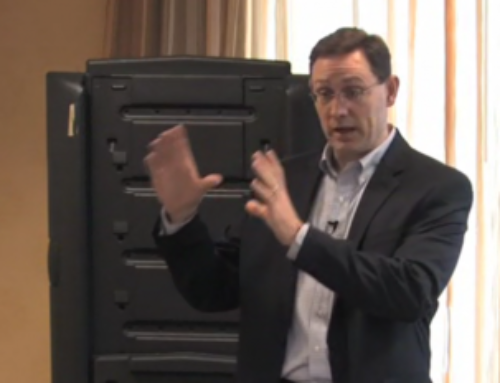Is Your Offense Broken?
By Rick Torbett, Inventor of Read & React
The funny thing is, I put this together I had 15 players that for two years, we worked out the Read and React. I had two FIBA pro players. I had about five college players and the rest were high school players with pedigrees. All state, all this, all that. They came from everywhere. None of them played on the same team. I had a very high level. We weren’t thinking youth. I wasn’t thinking youth when I put this in. But if you’re going to transfer this system– Here’s where 20 years of teaching math to high schoolers has helped me.
Think about a research mathematician. They are free, man. They’re out there on the frontiers. They’ve got freedom to explore and do some really wild stuff. But that freedom is based on some years of structured rules. You’ve got to have algebra 1. You’ve got to have algebra 2. You got to have geometry. Now you to have calculus. Now you got to have differential thing. Now you’ve to have a straight number. You don’t start with total freedom in research. You just don’t do it.
Let me draw a different analogy. A better analogy is a classical guitarist, someone or– just someone who is virtuoso on a guitar. You can give him a tune and they can just create the song. It’s like jazz. It’s never the same two times in a row. These are amazing people to watch. But that’s not how they learned. They started with rules. They had to learn the chords. Then they had to put together two or three chords at a time, very rule-oriented and start building certain muscle memories, the ability to change chords. Then soon we add more chords. Then eventually, yes. Eventually, they can create their own song. But you know something?
Someone, a beginner, that you teach three chords to, you can give them a song to play. They can play. There’s a lot of very elementary songs with just three chords. That’s the best analogy I have in terms of if you’re thinking on taking this Read and React system which is a full in the system, in and of itself the pros can run it. It would be awesome. It would be the best we’ve ever seen on the pro level basketball. It would change, in my opinion, viewership on the pro side. I think you’re seeing evidence of that with Golden State Warriors and the Spurs. People are attracted. Even though they don’t know a lot of basketball, they just like it.
Wow! There’s a lot of movement, they share the ball. There’s a lot of energy. They don’t know basketball. They just know what they like. They know what they see. Even though it could do that, when you’re talking about youth– Talk about giving them all the chords to play. You’ve got to start with the basic chords. You still give them a song to play. That’s my best analogy. You turn the song over to them as soon as you can. I picked three chords, Shelby, because the first three layers or first three actions of the Read and React–
- Pass and Cut
- Feed the post and cut
- If I dribble at you, you must cut
Just this past week, I taught it to some 12-year-old boys here in my hometown in one night. They were able to create their own possessions. They were able to transition up and down the floor. We were able to put defense– We’re able to go live and no one’s barking orders at them. They are creating their own possessions and they’re starting to learn by these rules, not principles. Not principles. Principles come later. Principles are behind the rules but the beginning player needs rules. They need actual spots to go stand on. They need to know exactly what to do as they’re learning. Then, with that kind of a framework, then you can begin to teach them things that are based on principle. Driving big open places. Most players just want to know how to please the coach. You know what that is, right? It’s good for the coach to come here and say, “Look, when this happens, do you see this? Does everyone see this?” “Yes, I can see it, coach.” You have my blessing to drive. Please drive. Now if you don’t, no big deal. You don’t have to.
To me, there’s a philosophy behind that. It’s that some players are going to do that and some are not. We don’t all grow and learn at the same time. I need that player that’s still learning how to play– They’re not going to take that opportunity and drive, as an example. They’ve got to be able to play with that really good player, high IQ, good skills, that when you say, “Look. You see this particular situation, you can drive right there. You’ll make it a long way without help needed.” That player will take it to it like that. I need that player to be able to play in a system with this other players at different levels of growth and one of them not screw it up for the others. The Read & React does just that. It allows players of all abilities to play in the same system.
To see a brief video explaining the first 3 layers on court, see Rick’s video here: Read & React – 3 Layers
For more information on Rick and his Better Basketball Products:







Leave A Comment